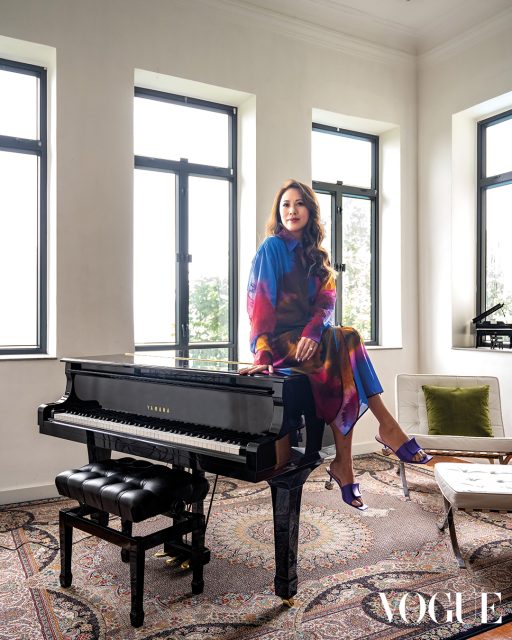Guo Pei, the renowned Chinese couturier, has always believed in sharing her country’s rich artistic heritage through style—an ethos she firmly upheld when creating her first collection with the Rug Company.
Titled “Opulent Nature,” the pieces all feature decorative textiles adorned with majestic Eastern patterns like dragons amid clouds, swirling waves, lion faces, and lotus-like flowers in bloom. “My work has always been about bringing about a wider international awareness of Chinese culture and traditions,” Pei says. “It was important to reflect its beauty through the carefully curated application of motifs, symbols, and ideas and develop them into a visually engaging manner.”
Fashion aficionados will recognize the aesthetics of one rug, “Empress Gold,” as a nod to her iconic fur-lined cape worn by Rihanna for the 2015 Met Gala. Both are the same shade of yellow, which symbolizes power in Chinese culture and was often worn by royalty.
View this post on Instagram
“Secret Garden,” too, takes its cues from clothing: its brilliant florals and long-plumed birds are meant to be reminiscent of the detail and precision of the tailoring seen during the Tang and Song dynasties. Meanwhile, “Lion Dance” also embraces flora-meets-fauna emblems, with two lions chasing a hydrangea on a pastel blue or pink background.
In total, there are seven distinct rugs, woven with fine wools and silks—the latter a material first invented in China, and historically one of their greatest exports. (So famous, in fact, was the product that it gave the Silk Road, the ancient trade route that connected the West with the Middle East and Asia, its name.) Rounding out the collection are two pillows, offered in the Lion Dance motif.
View this post on Instagram
Pei believes that “Opulent Nature” will fit neatly into homes both in the East and West—Chinese craftsmanship, after all, has always been much admired across the globe. (The extremely popular 17th-century art form of chinoiserie, for example, was a European interpretation of the styles developed by artisans in China.) “[Opulent Nature] represents a shared appreciation for the inherent beauty of Chinese culture and tradition, and its ability to transcend global tastes to create timeless pieces of luxurious refinement,” Pei concludes.
Editor
Elise TaylorCredit
Lead image: Lintao Zhang/ Getty Images

